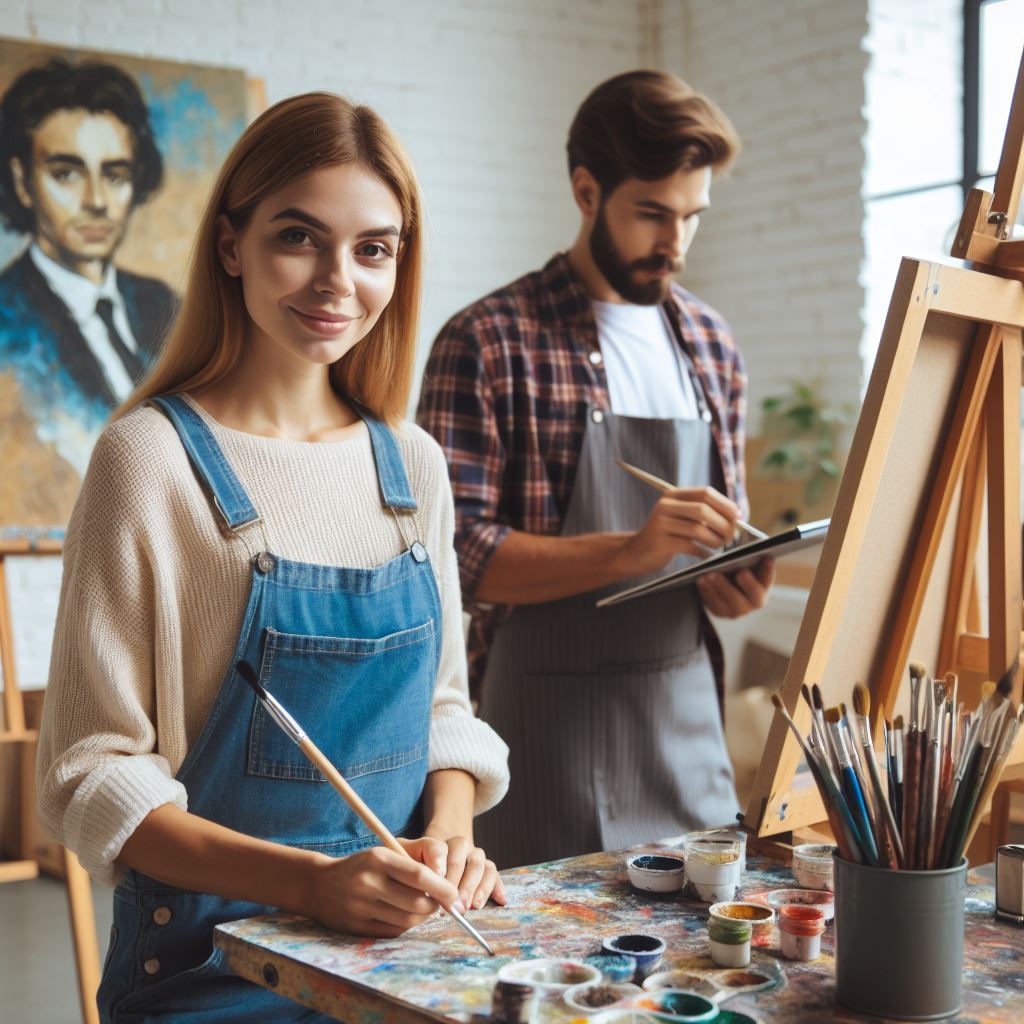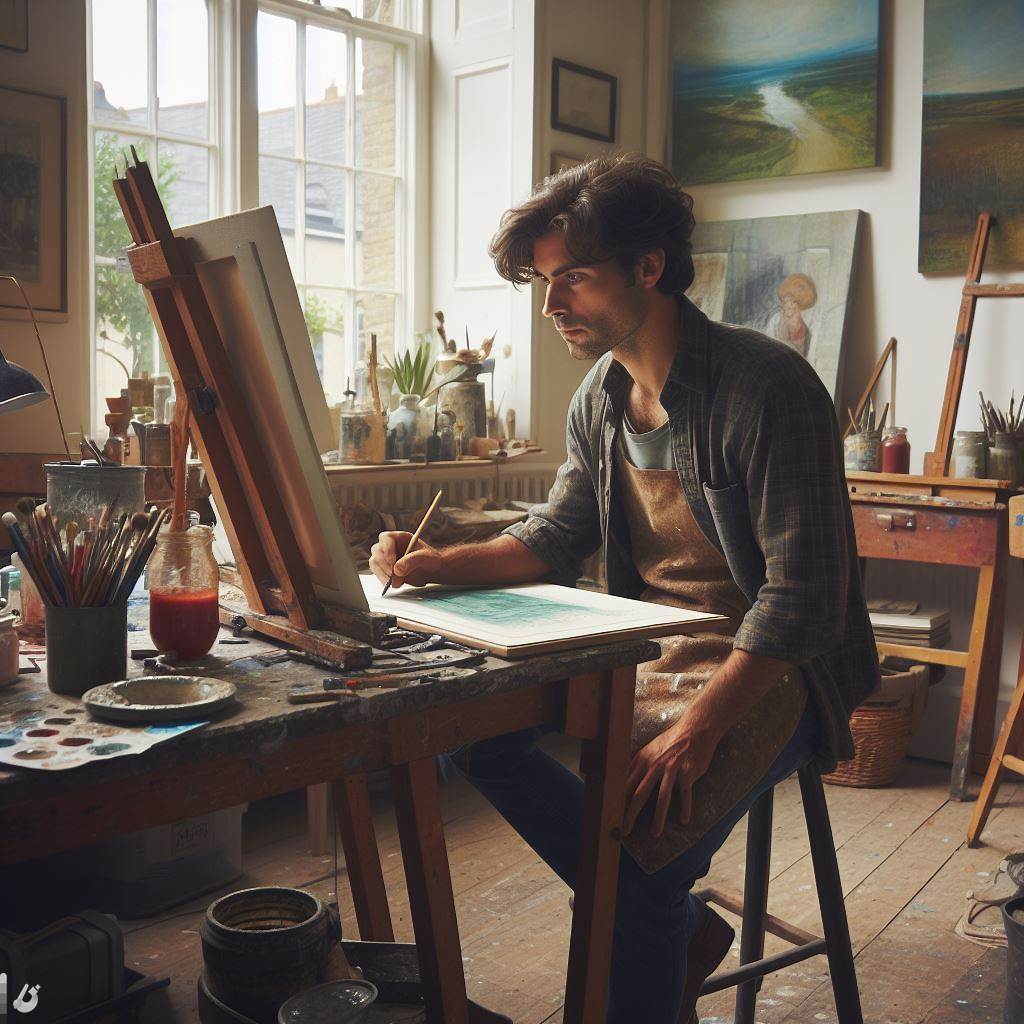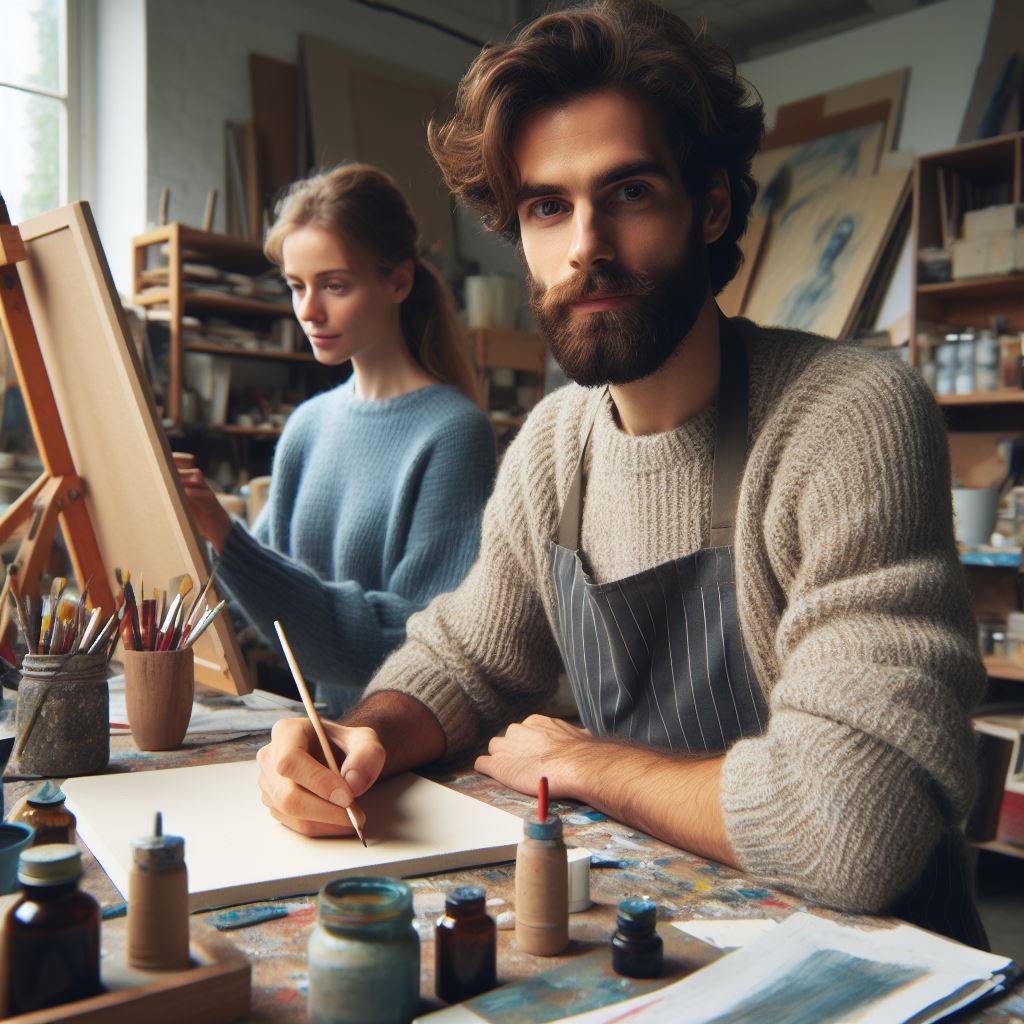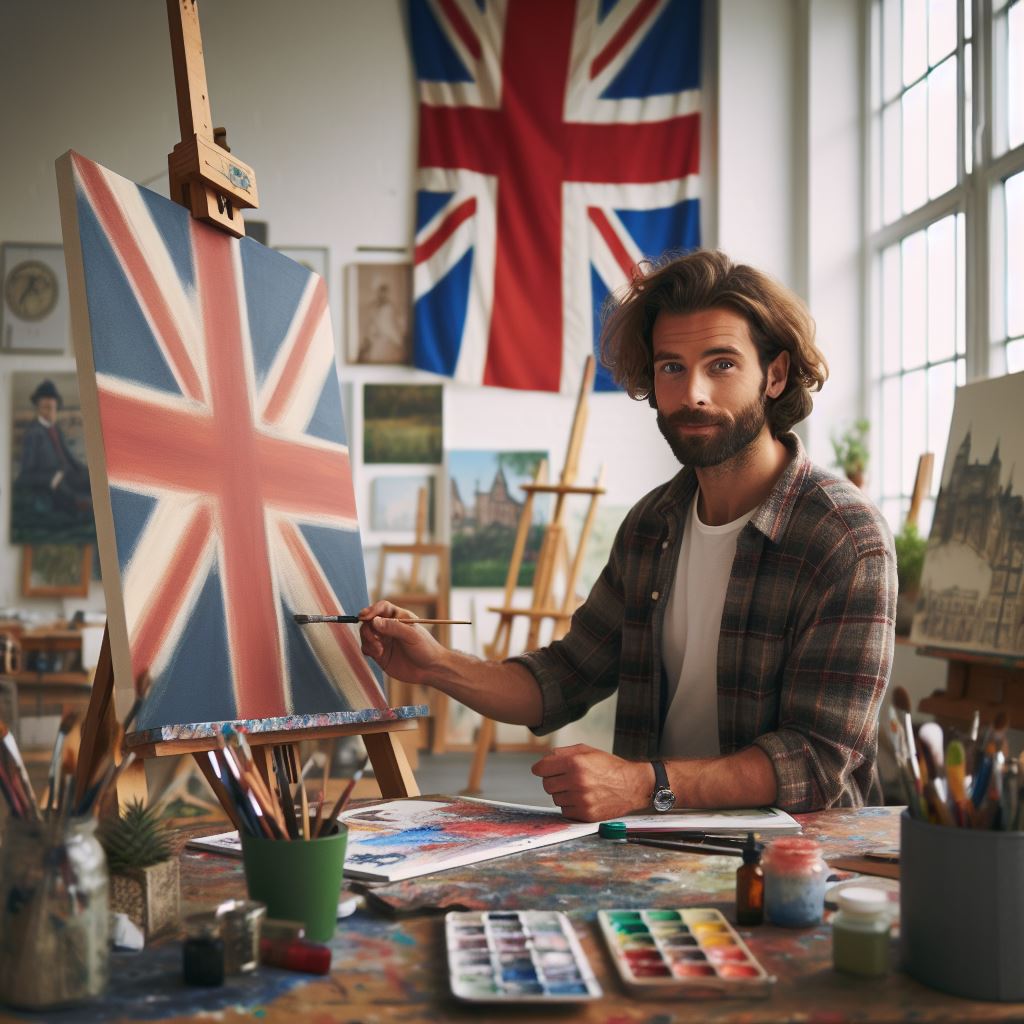Introduction
Delving into the emerging art trends anticipated for 2024 in the UK unravels the fascinating transformations within the artistic realm, hinting at evolving narratives and innovative approaches.
The significance of tracking and discussing art trends
Tracking and discussing art trends serve as a cultural compass, signifying societal changes and shaping artistic expressions, offering profound insights into evolving artistic landscapes.
The relevance of understanding the evolving art scene in the UK
Understanding the shifting artistic landscape in the UK provides a panoramic view of the evolving cultural dynamics, embracing diverse perspectives, and fostering creative dialogues.
Appreciating these changes not only enriches artistic interpretations but also illuminates societal shifts and influences.
Overview of the current UK art scene
In recent years, the art industry in the UK has flourished, diversifying and evolving in response to changing societal and cultural dynamics.
This blog section aims to provide an overview of the current state of the art scene in the UK, highlighting prominent art movements, styles, and themes, and explaining the factors and influences shaping the art landscape.
1. The current state of the art industry in the UK
The art industry in the UK is vibrant and dynamic, with a thriving community of artists, galleries, and institutions.
The demand for contemporary art has been steadily increasing, attracting both domestic and international buyers.
2. Prominent art movements, styles, and themes
- Post-Modernism: Artists in the UK are embracing post-modernist principles, challenging traditional art forms and blurring the boundaries between mediums.
- Street Art: From Banksy to Stik, street art has gained mainstream recognition and has become an integral part of the urban landscape in cities like London and Bristol.
- Environmental Art: With a growing focus on sustainability and climate change, many artists in the UK are incorporating environmental themes into their work, raising awareness and provoking dialogue.
- Identity and Representation: Artists are exploring issues of identity, diversity, and representation, reflecting the multicultural nature of contemporary UK society.
3. Factors and influences shaping the art landscape
- Digital Transformation: The advent of social media and online platforms has significantly impacted the way art is created, distributed, and consumed in the UK.
- Globalization: The UK art scene is increasingly influenced by global trends and international artists, promoting cross-cultural exchanges and diversifying artistic practices.
- Economic Climate: Economic factors, such as availability of funding, government support, and art market trends, greatly affect the growth and sustainability of the art industry in the UK.
- Social and Political Context: Art in the UK reflects the social and political issues of the time, responding to debates around Brexit, social inequality, and human rights.
In short, the UK art scene is in a state of constant evolution, driven by a dynamic mix of creativity, innovation, and socio-cultural influences.
Artists continue to challenge conventional norms, exploring new mediums and themes, while the globalized nature of the art world brings in fresh perspectives and diverse practices.
The future looks promising for the UK art industry as it remains at the forefront of artistic expression and experimentation.
Read: Health & Wellness Tips for UK Musicians
Technological Advancements in Art
Technology has revolutionized every aspect of our lives, and the art industry is no exception. From the creation to the consumption of art, technology has been making waves in the UK.
In this section, we will explore how technology is impacting the art scene in the UK, the emergence and popularity of digital art forms.
And the role virtual reality, augmented reality, and blockchain play in the industry.
1. Impact of Technology on Art Creation and Consumption
Artists in the UK are leveraging technology to push creative boundaries and explore new mediums.
With the advent of digital tools and software, artists can now experiment and create art like never before.
These technological advancements have opened up a whole new world of possibilities, enabling artists to express their ideas in innovative ways.
Moreover, technology has also influenced the way art is consumed.
Online galleries and platforms have made art more accessible to a wider audience.
People can now view and appreciate art from the comfort of their homes, breaking down physical barriers and creating a global art community.
2. Emergence of Digital Art Forms
Digital art forms are gaining immense popularity in the UK.
Artists are exploring various digital mediums such as digital painting, computer-generated art, and interactive installations.
Digital art allows for endless experimentation and manipulation, enabling artists to create immersive and thought-provoking experiences.
Furthermore, the rise of NFTs (Non-Fungible Tokens) has revolutionized the art market.
NFTs provide a way to prove ownership and authenticity of digital artworks using blockchain technology.
This has opened up new possibilities for artists to monetize their digital creations and establish their value in the art world.
3. Role of Virtual Reality, Augmented Reality, and Blockchain
Virtual reality (VR) and augmented reality (AR) have transformed the way we experience art.
Through VR, viewers can step into virtual art galleries and interact with art in a whole new dimension.
AR, on the other hand, allows for the integration of digital art into the physical world, blurring the boundaries between real and virtual.
Blockchain technology has also made significant inroads in the art industry.
It provides a transparent and secure platform for artists to sell their work directly to collectors, cutting out intermediaries.
Additionally, blockchain allows for the creation of unique digital certificates for each artwork, ensuring provenance and authenticity.
The technological advancements in the art industry have undoubtedly reshaped the landscape of art creation and consumption in the UK.
Artists are embracing digital art forms, and the emergence of VR, AR, and blockchain has opened up endless possibilities for innovation.
As we look towards 2024, it is clear that technology will continue to play a vital role in shaping the future of art in the UK.
Read UK Directors’ Networking: Why and How?
Sustainability and Environmental Art
The art world is experiencing a significant shift towards sustainability and environmental consciousness.
Artists and movements dedicated to promoting sustainability are gaining recognition and shaping the art trends in the UK for 2024.
This section will explore the increasing importance of sustainability in the art world.
Highlight artists and movements promoting environmental consciousness, and discuss the use of recycled materials and installations in artwork.
1. The Increasing Importance of Sustainability in the Art World
- Artists are recognizing the urgent need to address environmental issues.
- Sustainability has become a crucial aspect of artistic practice and exhibition.
- Galleries and museums are actively seeking artworks that promote sustainability.
- Sustainability-focused art grants and residencies are on the rise.
- The art market is showing increasing demand for eco-friendly and sustainable art.
2. Artists and Movements Promoting Environmental Consciousness
- The Eco-Art Movement is gaining prominence in the UK art scene.
- Artists like Olafur Eliasson and Andy Goldsworthy are known for their environmental artworks.
- Environmental art festivals and exhibitions are becoming more prevalent.
- Artists are using their work to raise awareness about climate change and ecological degradation.
- Collaborative projects between artists and environmental organizations are on the rise.
3. The Use of Recycled Materials and Installations in Artwork
- Artists are utilizing discarded materials and waste to create thought-provoking artworks.
- Recycled sculptures, installations, and mixed-media pieces are gaining popularity.
- Artists are repurposing found objects to create environmentally conscious art.
- Installations made from recycled materials are often interactive, engaging viewers in environmental dialogue.
- Artists are embracing upcycling techniques, transforming waste into beautiful and meaningful artworks.
Overall, sustainability and environmental art are becoming central to the UK art scene for 2024.
Artists and movements dedicated to promoting environmental consciousness are gaining recognition and reshaping the artistic landscape.
The use of recycled materials and installations further emphasizes the importance of sustainability in art.
Through their creations, artists are not only highlighting the importance of environmental preservation but also inspiring viewers to rethink their relationship with the natural world.
Personalized UK Career Consulting
Receive tailored career guidance designed just for you. Get actionable steps and expert support to boost your career in 1-3 days. Take control of your career now.
Get StartedRead: Corporate Ethics: A Guide for UK Directors
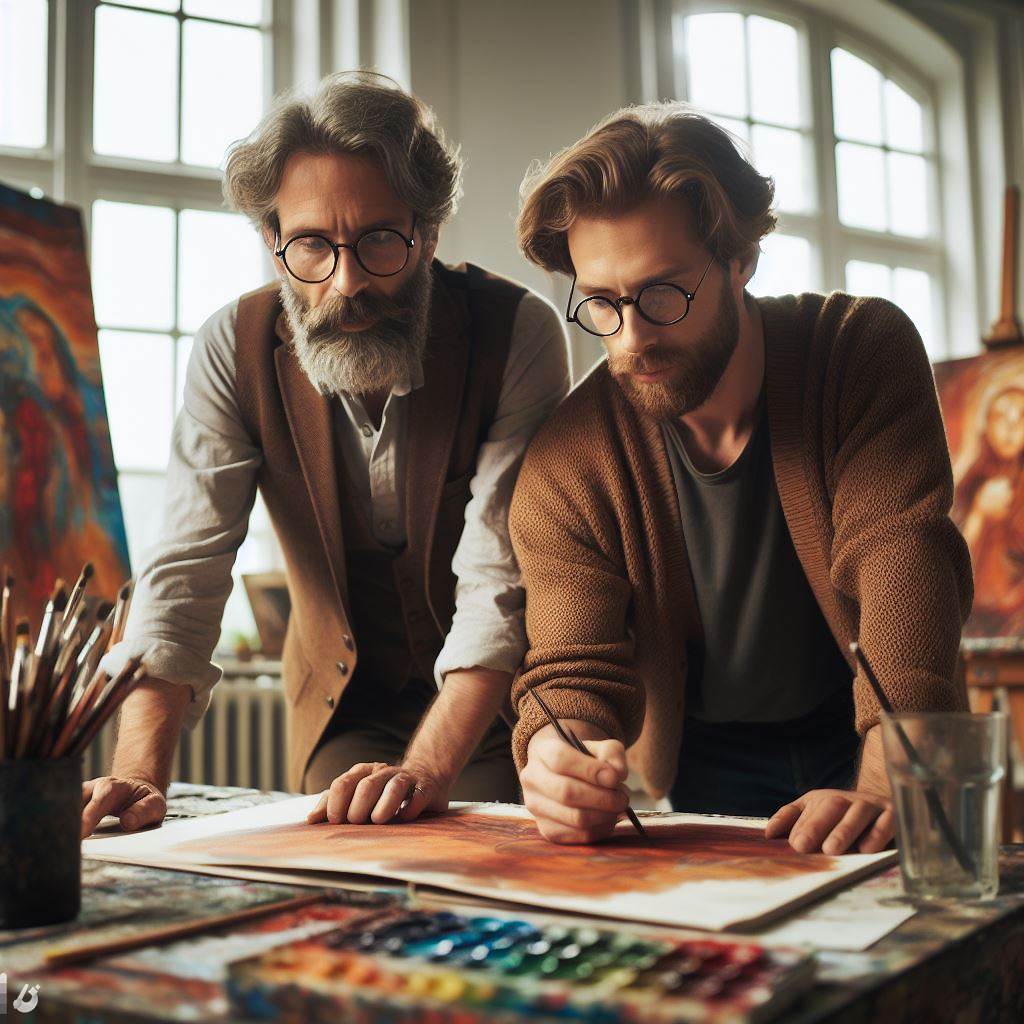
Learn More: The Impact of Brexit on UK Company Directors
Diversity and representation in art
In recent years, there has been a significant shift in the art world towards a demand for diversity and inclusivity.
Artists are challenging the traditional art canon and redefining the standards of what is considered important and valuable in the art field.
This has led to the rise of marginalized communities’ representation in UK art. Let’s take a closer look at these emerging art trends for 2024.
Addressing the growing demand for diversity and inclusivity in the art field
- The art community is increasingly recognizing the importance of representing diverse voices and experiences.
- Art institutions and galleries are taking steps to ensure their collections and exhibitions reflect a wider range of perspectives.
- There is a push for increased representation of women, people of color, LGBTQ+ individuals, and artists with disabilities.
- Curation and selection processes are being reevaluated to break away from traditional biases and champion underrepresented artists.
- By including marginalized voices, the art world becomes more inclusive and accessible to a broader audience.
Challenging the traditional art canon and redefining standards
- Artists are questioning and deconstructing the idea of what constitutes “high” art.
- Exploring new mediums such as street art, digital art, and performance art challenges traditional art forms.
- Artists are experimenting with unconventional materials and techniques to break away from established norms.
- By challenging the traditional art canon, artists pave the way for new narratives and perspectives.
- These new approaches encourage viewers to question preconceived notions of art and engage with the works more actively.
The rise of marginalized communities’ representation in UK art
- There is a significant increase in representation of marginalized communities in UK art.
- Artists from diverse backgrounds are gaining recognition and visibility in the mainstream art scene.
- Themes of identity, race, gender, and social inequality are being explored extensively in contemporary art.
- Exhibitions and projects are highlighting the untold stories and experiences of marginalized communities.
- These artistic expressions provide a platform for dialogue and promote understanding and empathy.
In short, the art world in the UK is currently experiencing an exciting shift towards diversity and representation.
Artists are challenging traditional norms, redefining what is considered valuable, and ensuring marginalized communities are no longer ignored.
This new wave of inclusivity brings fresh perspectives and narratives to the forefront, creating a more vibrant and inclusive art scene.
With continued efforts and support, these emerging trends are set to shape the art field in the UK for years to come.
Read: Managing Change: A UK Director’s Toolkit
Art and social activism
Investigate the intersection of art and social activism in the UK
Art has always been a powerful medium for expressing ideas, emotions, and perspectives. In recent years, there has been a noticeable surge in the intersection of art and social activism in the UK.
Artists are utilizing their creativity to tackle pressing social issues and raise awareness in unique and thought-provoking ways.
Artists using their creativity to address social issues and raise awareness
One prominent example of an artist using their creative skills for social activism is Banksy.
Banksy, a renowned street artist, has made significant contributions to shedding light on various societal problems through his art.
His murals often depict political statements or satirical commentary on prevailing issues such as inequality, consumerism, and government policies.
Banksy’s artwork serves as a catalyst for initiating conversations and sparking change within society.
Another artist making waves in the realm of social activism is Grayson Perry.
Through his provocative and engaging artworks, Perry addresses topics such as gender, class, and identity.
He tackles these subjects head-on, utilizing traditional mediums like ceramics, tapestry, and printmaking to highlight the experiences of marginalized groups and challenge societal norms.
Perry’s work acts as a powerful tool for promoting inclusivity and sparking important discussions.
How art is facilitating conversations and promoting change
Art, in its various forms, has become a vital instrument for facilitating conversations and promoting change.
Whether it’s street art, paintings, installations, or performance art, the messages conveyed through artistic expression have the power to resonate with individuals on a deeply emotional level.
Art engages viewers, challenges their perspectives, and compels them to question the status quo.
It has the ability to transcend language barriers and connect people from diverse backgrounds, fostering a sense of empathy and collective action.
Artistic collectives such as ACT UP London are using their creativity to address social issues and advocate for change.
ACT UP London is an activist group that uses performance art and protests to bring attention to the ongoing HIV/AIDS crisis in the UK.
Their innovative approach combines political activism with artistic expression to demand better healthcare, strive for equality, and challenge stigmatization and discrimination.
Art is playing a transformative role in raising awareness about pressing social issues that often go unnoticed or ignored.
By visually representing these issues, artists have the power to expose societal problems, evoke emotions, and inspire action.
Many artists are aligning themselves with social causes and collaborating with grassroots organizations to amplify their messages even further.
In review, the intersection of art and social activism in the UK has become a driving force for change.
Artists are leveraging their creativity to address social issues and incite conversations that challenge prevailing norms and stimulate awareness.
Through their artistic expressions, both established and emerging artists are shaping public dialogue and redefining the role of art as a catalyst for positive transformations in society.
Conclusion
Summarize the key emerging art trends in the UK for 2024
The anticipated art trends in the UK for 2024 paint a diverse canvas. Immersive installations.
Eco-art advocating environmental consciousness, and innovative digital explorations stand at the forefront.
Emphasize the dynamic nature of the art industry and its constant evolution
The art industry incessantly evolves, mirroring societal shifts, embracing experimentation, and pushing the boundaries of creative expression.
Its fluidity fosters an environment ripe for novel artistic narratives and forms.
Encourage readers to explore and support emerging artists and art movements in the UK
Engaging with and supporting emerging artists and art movements is instrumental. It fuels creativity, nurtures budding talents, and contributes significantly to the dynamic landscape of the UK art scene.
Embrace and champion these creative voices to enrich the cultural tapestry.
[E-Book for Sale]
500 Cutting-Edge Tech Startup Ideas for 2024 & 2025: Innovate, Create, Dominate
$19.99 • 500 Tech Startup Ideas • 62 pages
You will get inspired with 500 innovative tech startup ideas for 2024 and 2025, complete with concise descriptions to help you kickstart your entrepreneurial journey in AI, Blockchain, IoT, Fintech, and AR/VR.

